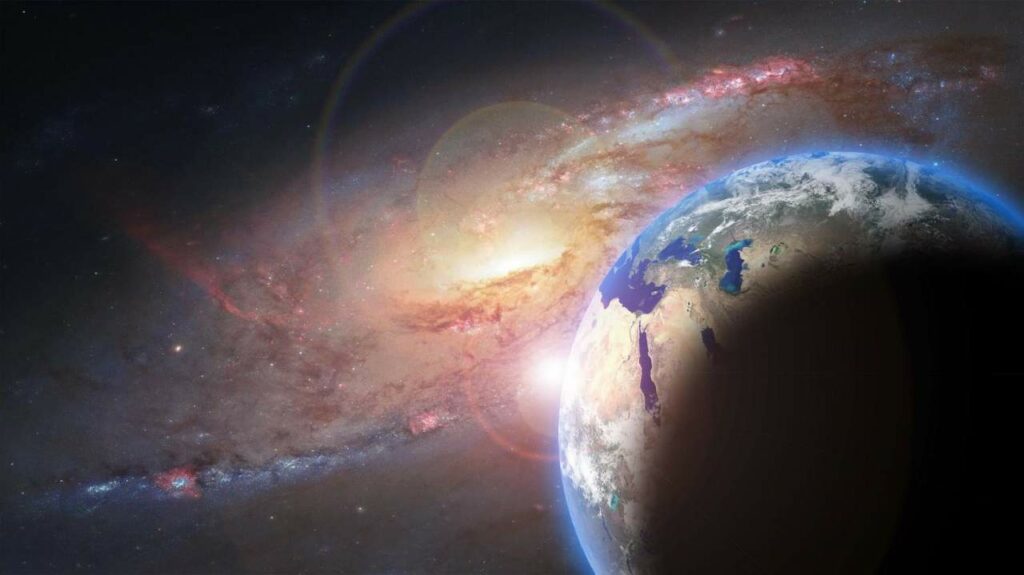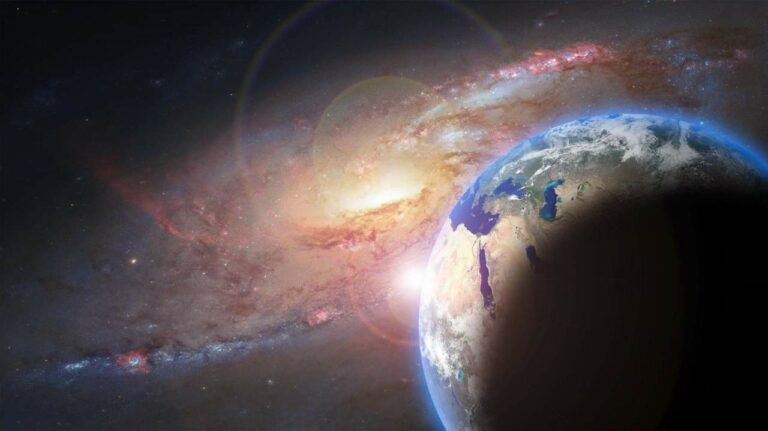Earth Traversed a Cold Interstellar Cloud Around 2 Million Years Ago
It is important to know that 2 million years ago the environment was quite different to what we may now envisin and our human ancestors coexisted with such creatures as saber-toothed tigers, mastodons and giant rodents. And, depending on where they were, they may have been cold: Ice Ages ruled the globe and Earth went through several cycles of freezing before civilizations emerged about 12 000 years ago.

This explainers scientists propose that there are several causes of ice ages such as tilt and rotation of the planet, tectonic movements, volcanic activity and the amount of carbon in the atmosphere. However, what if such transformations are not only caused by Earth’s conditions but also the position of the Sun in the galaxy?
Astrophysics Professor at Boston University and Fellow at Harvard Radcliffe Institute Merav Opher has found that in some two million years ago the solar system came close enough to an interstellar cloud which could have disrupted the solar wind emanating from the sun. According to Opher and her co-authors, this indicates how the location of the sun in space can extend more influence to Earth’s history than previously thought.
The heliosphere is an outward bubble protecting our whole solar system, which is an extension of physical forces originating from the sun. It is composed of an ongoing blast of electrically charged particles, known as the solar wind, which extends far beyond Pluto and encircles the planets in a ‘bubble’, according to NASA.
It shields us from radiation and galactic rays that may mutate genes and scientists suggest it is for this reason that life developed on Earth as it did. As stated in the latest paper, the cold cloud squeezed the heliosphere in a manner that put the Earth and the other members of solar system outside the heliosphere for a short while.
“This paper is the first to present evidence that there was an interaction between the sun and something from outside the solar system that would alter the climate on Earth,” says Opher, an expert in heliosphere.
Her models have quite literally defined the heliosphere and how the structure of the bubble is formed through the solar wind as it interacts with the interstellar medium- that is, the space in between stars and beyond the heliosphere in our galaxy. According to her, the heliosphere has a croissant-like shape, a statement that caused a stir in the society of space physics.
Now she is bringing a new understanding of how the heliosphere, and where the sun travels in space, might influence the chemistry of the Earth’s atmosphere.
“Stars move and now this paper is showing not only that they move but they encounter drastic changes,” Opher notes. It was during her year-long fellowship at the Harvard Radcliffe Institute that she first came across this study and started working on it.
To investigate this occurrence, Opher and her colleagues effectively rewound the clock, simulating precisely where the sun was 2 million years ago and, with it, the heliosphere and the rest of the solar system. They also charted the course of the Local Ribbon of Cold Clouds system which is a series of large, dense, very cold clouds which mainly contains hydrogen atoms.
Their simulations showed that one of the clouds close to the end of that ribbon, named the Local Lynx of Cold Cloud, could have collided with the heliosphere.
If that had happened, says Opher, Earth would have been fully exposed to the interstellar medium, where gas and dust mix with the leftover atomic elements of exploded stars, including iron and plutonium.
Usually, the heliosphere shields humanity from most of these radioactive particles. However, without protection they can reach Earth rather quickly. As pointed out in the paper, this is consistent with geological records of higher 60Fe (iron 60) and 244Pu (plutonium 244) isotopes found in ocean, moon, Antarctic snow, and ice cores of the same period. This also coincides with temperature records that show a cooling period.
“Our astronomical environment outside the solar system influences life on Earth sparingly, according to Avi Loeb, director of Harvard University’s Institute for Theory and Computation and a co-author on the paper. ”
“It is inspiring to realize that several million years ago when traversing cloudy regions, the Earth could have been exposed to a significantly higher flux of cosmic rays and neutral hydrogen atoms. ”
The outside pressure from the Local Lynx of Cold Cloud could have continually closed the heliosphere for a couple of hundred years to a million years, Opher explains based on the size of Cold Cloud. “But as soon as the Earth was away from the cold cloud, the heliosphere captured all the planets, including Earth,” she continues. That is the way it is today.
Thus, it’s impossible to say how exactly the cold clouds would have influenced the conditions on Earth – perhaps, an ice age could have started?However, there are a couple of other cold clouds in the interstellar medium that the sun has probably encountered in the billions of years after it was born, Opher says. And it will probably come across more in another million years or so .
Opher and her colleagues are now currently trying to map where the sun was located seven million years ago and even earlier. Exact coordinates of the Sun millions of years ago and the position of the cold cloud system can be determined using the information acquired by the European Space Agency from its Gaia mission which is constructing the largest three-dimensional map of the galaxy and affording a unique view of the velocities of stars.
“This cloud was indeed in our past, and if we crossed something that massive, we were exposed to the interstellar medium,” says Opher. It is unknown what impact passing by this much hydrogen and radioactive material has had, thus Opher and her team at BU SHIELD DRIVE Science Center are now studying how it may have affected the radiation of the Earth and the atmosphere and climate.
“This is only the beginning,” Opher says. She only wishes that this paper will create room for even more analysis on how the formation solar system was affected by such forces in the early ages and how the forces in turn affected development of life on Earth.
Reference: A possible direct exposure of the Earth to the cold dense interstellar medium 2–3 Myr ago, Nature Astronomy (2024). DOI: 10.1038/s41550-024-02279-8
Do not forget to share your opinion with us to provide you with the best posts !




0 Comments